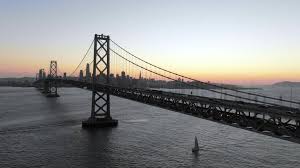Exploring the Bay Bridge: Engineering, History, and Future

Introduction
The Bay Bridge, an iconic structure connecting San Francisco and Oakland in California, is a vital lifeline for commuters and a marvel of engineering. Spanning approximately 1.8 miles, this multi-span bridge serves not only as a crucial transportation link but also as a symbol of resilience and innovation. In the wake of ongoing infrastructure discussions and climate considerations, the Bay Bridge’s significance continues to grow, warranting attention from both locals and tourists alike.
Historical Context
Constructed during the Great Depression and completed in 1936, the Bay Bridge stood as a testament to engineering prowess and economic necessity. Initially faced with skepticism regarding its feasibility, the bridge soon became a celebrated success, facilitating travel and trade across the San Francisco Bay and stimulating regional economic growth. Over the years, significant upgrades and retrofitting efforts have been made, especially after the 1989 Loma Prieta earthquake underscored the need for enhanced safety measures.
Recent Developments
As of 2023, the Bay Bridge is undergoing several maintenance and improvement projects aimed at preserving its structural integrity and enhancing traffic flow. The California Department of Transportation (Caltrans) has initiated a comprehensive review to address areas prone to wear and tear. According to Caltrans, recent inspections have confirmed the bridge’s compliance with modern safety standards, however, ongoing work is essential to navigate challenges posed by increased traffic volumes and environmental factors.
Moreover, there are discussions surrounding the implementation of smart technology to improve vehicular flow and reduce congestion. Innovations could include real-time monitoring systems that adjust traffic signals and inform drivers of optimal routes during peak hours, aiming to alleviate chronic traffic jams and improve transit times.
Significance of the Bay Bridge
The Bay Bridge is more than just a practical route; it is a cultural landmark. Each day, it carries over 260,000 vehicles, linking diverse communities and economies. Its striking design attracts photographers and artists, while its role in annual events, such as the Bay Bridge Run, showcases local spirit and community engagement.
Conclusion
Looking ahead, the Bay Bridge remains a critical artery for the Bay Area, symbolising not only connection and progress but also the challenges of maintaining aging infrastructure in a rapidly changing environment. With ongoing enhancements and the potential, for smarter technology integration, the Bay Bridge is set to adapt to the futures of transportation and urban development. Continued awareness and proactive approaches to its upkeep will ensure that this iconic structure serves generations to come.








